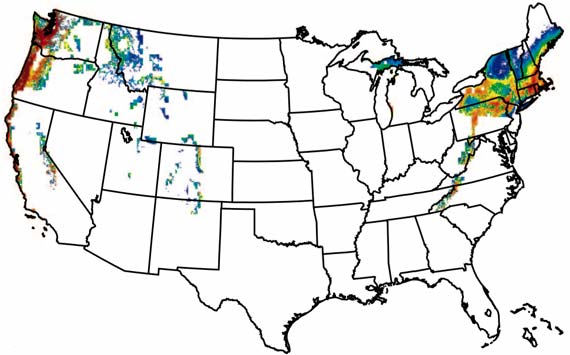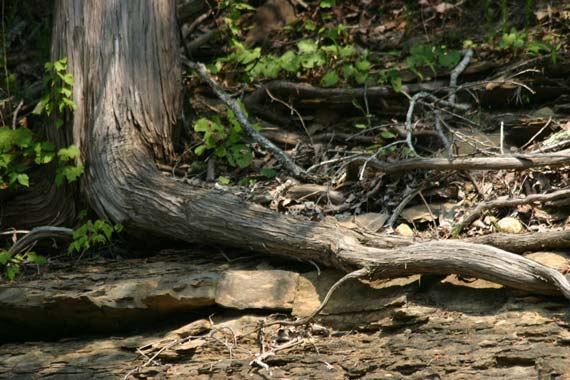Musings

Sign from Oaxaca, years ago.
Below is table of some numbers I’ve been contemplating late this afternoon, estimated populations for some cities, with populations above 10,000 people, across Mesoamerica at the time the Spanish arrived in their grand quest for wealth and souls.
The obvious conclusion is that they encompass a wide variety of population densities—probably because the community is spread across rugged ground or substantial areas between the houses are allocated to gardens, although there may be other reasons. But what else?
| name |
region |
area (ha) |
population |
density |
| Tenochtitlan* |
Central Mexico |
1350 |
212,500 |
157.41 |
| Tzintzuntzan |
West Mexico |
674 |
30,000 |
44.51 |
| Texcoco |
Central Mexico |
450 |
24,100 |
53.56 |
| Mayapan |
Yucatán |
420 |
21,000 |
50.00 |
| Zacapu |
West Mexico |
1100 |
20,000 |
18.18 |
| Huexotla |
Central Mexico |
300 |
17,100 |
57.00 |
| Yautepec |
Central Mexico |
209 |
15,100 |
72.25 |
| San Juan Teotihuacan |
Central Mexico |
250 |
13,500 |
54.00 |
| Chalco |
Central Mexico |
250 |
11,000 |
44.00 |
| Otumba |
Central Mexico |
220 |
10,700 |
48.64 |
| Naco |
Southeast Mesoamerica |
160 |
10,000 |
62.50 |
*Where the center of Mexico City is now (the Zócalo).
Posted at 6:00 PM |
Comments Off on Data stream

Ick. Ick. ICK. (If you click, I warned you!)
Anthropologists call it intensification of production….
Posted at 10:22 PM |
3 Comments »

I IMed jcb something about algorithms (don’t ask!) and he responded inquiring about Al Gore rhythms, but I know he hasn’t seen the movie yet….
Posted at 6:58 PM |
4 Comments »

Some climatology types have examined the effect on agriculture in the US—specifically premium wine grape areas—by a continued trajectory of increasing temperatures over the next century. The figure they used is 2–6°C. This is Figure 2-f, showing where the prime areas will shift to—that is, those areas lacking extremes of heat and cold. They make the point that wine is economically significant with 3.5 million tons of winegrapes out of approximately 6 million tons of grapes harvested each year. By converting them into wine, their value increases greatly, with concomitant deleterious effects if their production drops this much.
This is your world, and the projection is not pretty. Note how few premium grapes will come from California. In short:
… areas marginally suitable for winegrape production in the current climate were nearly eliminated and the area capable of consistently producing grapes required for the highest-quality and highest-priced wines declined by >50%.
Don’t trust my word; download the original here.
And, no, I haven’t seen Al Gore’s movie yet. Have you? What’d you think?
Posted at 6:13 PM |
Comments Off on Our future?

In principle, I’m a fan of historical fiction—just so it’s labeled as fiction. My current favorite is Farley Mowat’s The Farfarers. Mowat didn’t write pure historical fiction though, as the book alternates between archaeological and archival data chapters and his imagined version of the peoples who headed west from northwest Europe to Iceland, Greenland, and the New World (before they had those names, of course). It’s a masterful weaving, and makes the past come alive. He avoids expending much energy generating internal dialogue, instead concentrating on obvious material issues—watching weather, missing family, dietary concerns.
I had hoped Laura Esquivel’s Malinche would be a similar tour-de-force. The topic is right: contact-period central Mexico, and the turbulent times initiated by the arrival of Spanish plunderers and murderers and their not-so-noble men of the cloth. Esquivel completely captured my attention with her lyrical Like Water for Chocolate, and I hoped that her imagined version of the Spanish meany Córtes’s female translator’s experience as Córtes’s slave and servant would be similarly admirable. Early in their relationship, as Esquivel describes it, Córtes rapes Malinalli (aka Malinche, and considered a traitor by most Mexicans) and she is both dreamy and unconcerned. I tried to read more, but was too disgusted to continue. I expected far more from Esquivel. Don’t waste either your time or your money on this book.
The Farfarers, on the other hand, is worth every penny.
Posted at 5:39 PM |
5 Comments »

So, checking my (Mexican Spanish) dictionary, I find this word “plomero�? is �?Amer.�? for plumber, which is what I remember from signs south of the border. In Spain, I guess it means “leader,�? referring to the metal, not your order walking on the trail…. Anyway, this is the new kitchen faucet El plomero installed. Fine! Fancy! And, yes, it does stream or spray, and pulls out about 70 cm! Whew! You can make a BIG mess with that!
Posted at 8:28 PM |
4 Comments »

When I took this picture, I don’t remember thinking the water had this strange, distinctive, remarkable color, but this is what the camera shows it looked like, unretouched. Lake Cumberland, earlier this week. Also, admire the surface tension….
Stay tuned! Coming tomorrow: picture of the new kitchen faucet! Installed!
Posted at 7:17 PM |
2 Comments »

All by itself, the word diacritical commands your attention. Then, when the scorn-bearing word marks is added, its impact intensifies. Thankfully, for those of us who forget our diacritical marks, Wikipedia has a detailed entry to jog our memories, along with separate entries on each of them. Remember caron? Cedilla? Ever learn ogonek? I missed that one. Now I know what those dots above mean, too!
Off to make goat cheese and lamb and spinach packets in filo aka phyllo dough….
BONUS: For a while I thought I might blahg on this comment by Niles Eldridge:
Some of my more naive colleagues insist that the “hypothetico-deductive method” is what sets science apart from all other domains of human experience. One frames a hypothesis—they never bother to explore where those come from, even though that’s the most interesting bit—and devises a test. If the test fails, the hypothesis is falsified; if the test “passes,” we can only say that the hypothesis is corroborated—or at least not falsified. The logic involved is exactly the same as anyone with any savvy at all brings to buying a used car.
Instead, I’ll just give you the link, if you’re interested. I agree with him, by the way: how did you get that idea after all? How much alcohol was involved? Did the germ of the idea arrive in a dream? “Interesting�? has quite a range, here….
Posted at 5:16 PM |
Comments Off on Say die-ah-critical

News of the day here: while we were gone, nefarious characters using computers in Turkey hacked our server, and tens of thousands of others. Thanks to Herculean efforts by our stalwart web guys (and hours spent being Herculean), we’re back online, more secure and updated than before. Kudos for all these efforts, and many others, that keep us online and functioning (usually) so seamlessly!
Now, this, the photo? Ah, that’s a hot plate!—spotted in the window of a decorate-it-yourself ceramics shop in Virginia-Highland.
And, it is hot! Here, in Kentucky on the houseboat, everywhere nearby. I’m not looking forward to the day, hour, or minute, when we get hit by the rolling blackouts, whether it’s this year or in the years to come. Maybe I’ll try to spend longer in the UP (a la Mouse’s Moom), to avoid them….
Posted at 5:34 PM |
5 Comments »

Reservoirs are a great example of our colonialism of the environment. Here’s a hardy cedar that’s coping pretty well with having it’s forest neighbors on the downhill side totally obliterated. Reservoirs also eliminate human inhabitation, as happened with the town of Rowena, Kentucky, now moved to dry land. Our planners here in the US are pretty arrogant. Long ago, I worked on the archaeology of a lovely pre-horse Pawnee hunting camp (bison butchering site) that was going under the Calamus Reservoir, in central Nebraska. At the time, the Calamus River was the most constant-flowing river in North America. Now it’s dammed up, and the wild, sandhills flavor of this part of Loup County is muted.
Don’t even get me started on the impact of the Three Gorges Dam.
Posted at 10:22 PM |
Comments Off on Reservoir colonialism









